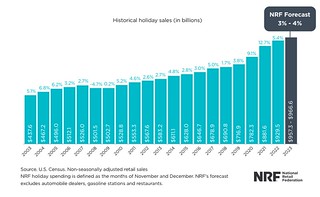Déjà vu all over again as Nov. 17 federal budget deadline looms
The current Farm Bill, which expires at yearend, provides funding not only for agriculture, but also Supplemental Nutrition Assistance Program, or SNAP, which provides food for those with limited resources.
By Mary Hightower
U of Arkansas System Division of Agriculture
Fast facts
- Fed leaves current interest rates intact
- Farm Bill extension touted as shutdown looms
(660 words)
(Newsrooms: with graph, art of Loy)
LITTLE ROCK — The 11th-hour continuing resolution that kept the federal government open for another 45 days runs out on Nov. 17, providing a déjà vu moment as lawmakers battle over the budget and employees hope to continue to receive paychecks during the holidays.
Disagreement over Israel, Ukraine and the wall on the southern border are keeping Congress sharply divided.
“Both sides can’t seem to come to a resolution to figure it out,” he said. “It's making
everything else be pushed to the back burner, and one of those things pushed the back
burner is the Farm Bill.
"The current Farm Bill, which expires at yearend, provides funding not only for agriculture,
but also Supplemental Nutrition Assistance Program, or SNAP, which provides food for
those with limited resources.
If Congress doesn’t approve a budget, it could pass a continuing resolution to keep the government open, as it did on Sept. 30.
Loy said Arkansas Sen. John Boozman, ranking member of the Senate Agriculture Committee, “has made it known that he wants at least a one-year extension of the 2018 Farm Bill in a new continuing resolution.
“What would that mean for the Farm Bill? Nothing would change as far as the wording of the Farm Bill. It would just mean that it has enough funding for at least one year to conduct all the programs it typically would,” he said.
The divisions that are plaguing the budget discussion also affect the Farm Bill, Loy said. “One side wants to reduce SNAP funding and the other side doesn’t.”
There are also differences over details such as reference prices, those numbers the government uses to calculate Agriculture Risk and Price Loss Coverage payments, better known as ARC and PLC.
However, “the biggest thing that's hanging the legislation up is having to spend, or having to pass, another continuing resolution and a Farm Bill extension,” Loy said. “Those are taking precedence over the debate on the 2023 Farm Bill.
The Fed and Inflation
On Nov. 2, the Federal Reserve decided to leave interest rates alone as it did in September. The Fed had stepped rates up in February, March and July in an effort to slow inflation.
“They kept it the status quo, and it's actually looking to be that they're not going to raise it again when they meet in December,” Loy said. “The trajectory for inflation is down.”
Loy said the markets and the Fed will be keeping an eye out on two factors: the October jobs report, which came out Nov. 3 and showed unemployment remaining at 3.9 percent, and the Consumer Price Index, which will be released Nov. 14.
Meanwhile, consumers don’t seem to have any plans to stop spending this fall. The National Retail Federation issued its annual holiday forecast on Nov. 2. The report projects holiday spending in November and December to grow 3-4 percent over last year to between $957.3 billion and $966.6 billion.
“It is not surprising to see holiday sales growth returning to pre-pandemic levels,” NRF President and CEO Matthew Shay said. “Overall household finances remain in good shape and will continue to support the consumer’s ability to spend.”
The NRF said that “despite a slower growth rate compared with the past three years, when trillions of dollars of stimulus led to unprecedented rates of retail spending during the pandemic, this year’s holiday spending is consistent with the average annual holiday increase of 3.6 percent from 2010 to 2019.”
However, some are being a bit more cautious about the holidays. According to a report by CNBC, the momentum built by stimulus checks and pandemic savings may be slowing.
To learn about extension programs in Arkansas, contact your local Cooperative Extension Service agent or visit www.uaex.uada.edu. Follow us on X and Instagram at @AR_Extension. To learn more about Division of Agriculture research, visit the Arkansas Agricultural Experiment Station website: https://aaes.uada.edu. Follow on X at @ArkAgResearch. To learn more about the Division of Agriculture, visit https://uada.edu/. Follow us on X at @AgInArk.
About the Division of Agriculture
The University of Arkansas System Division of Agriculture’s mission is to strengthen agriculture, communities, and families by connecting trusted research to the adoption of best practices. Through the Agricultural Experiment Station and the Cooperative Extension Service, the Division of Agriculture conducts research and extension work within the nation’s historic land grant education system.
The Division of Agriculture is one of 20 entities within the University of Arkansas System. It has offices in all 75 counties in Arkansas and faculty on five system campuses.
Pursuant to 7 CFR § 15.3, the University of Arkansas System Division of Agriculture offers all its Extension and Research programs and services (including employment) without regard to race, color, sex, national origin, religion, age, disability, marital or veteran status, genetic information, sexual preference, pregnancy or any other legally protected status, and is an equal opportunity institution.
# # #

